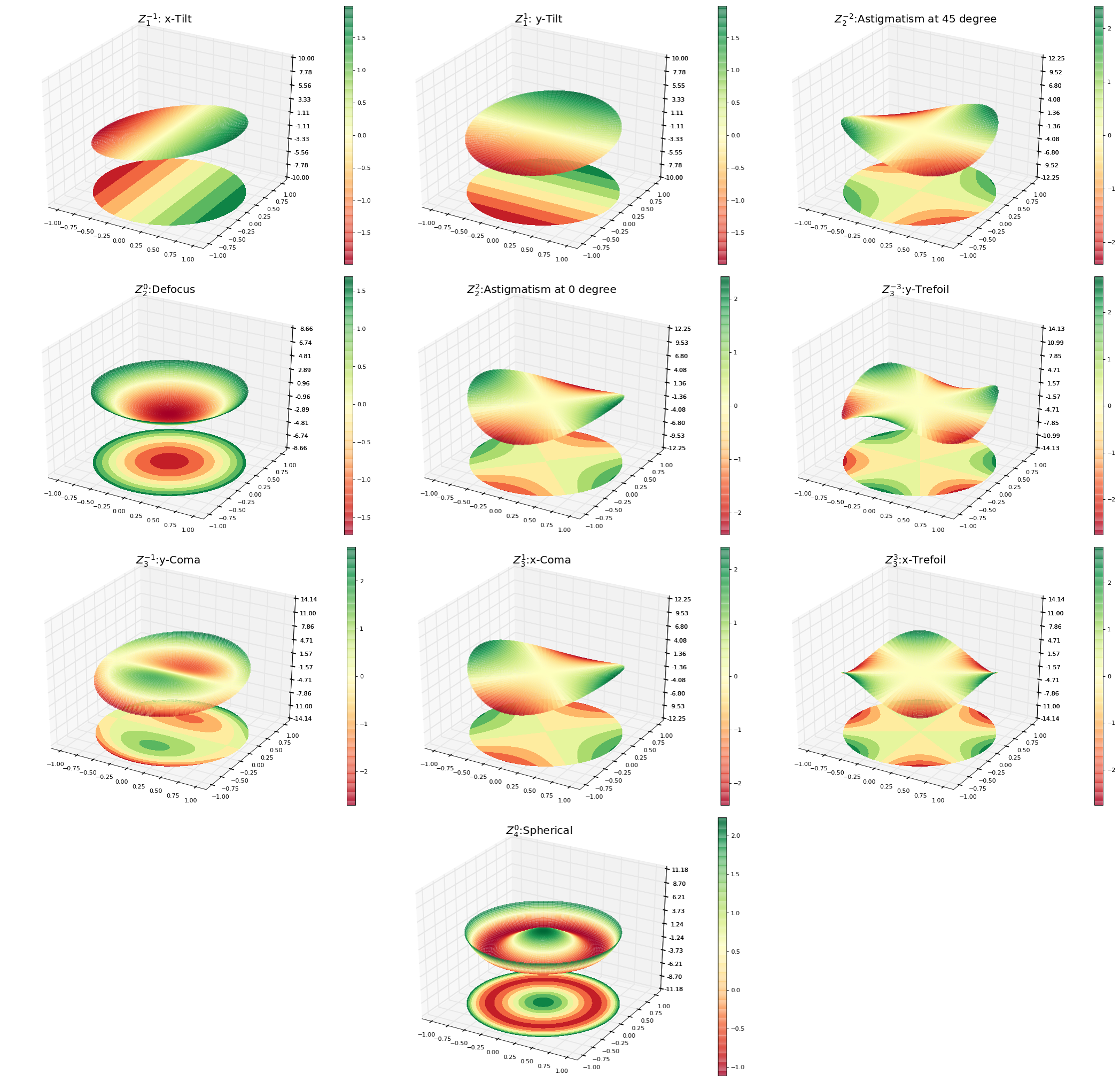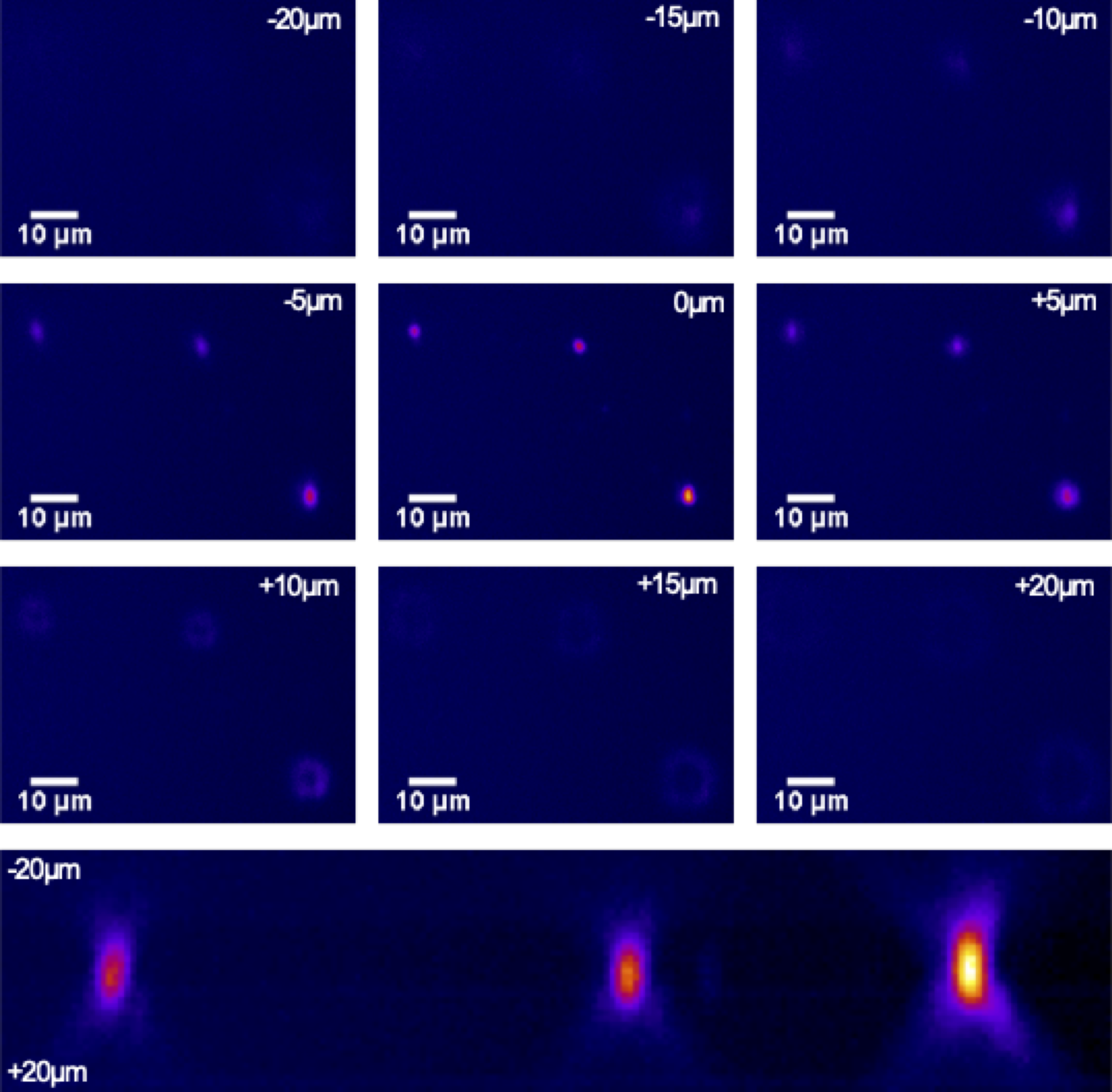Remote Focusing and Optical Aberration Correction
Optical aberrations are a major problem in high resolution microscopy. They originate from waveform distortions, which often occur during the transmission of light through the optical system, due to imperfections of the optical system as well as its individual components. These distortions can be approximated and mathematically described by Zernike polynomials (Fig. 1). With deformable mirror optics it is possible to compensate the aberrations by actively reshaping the wavefront using optomechanical or -electrical devices [1]. A deformable mirror (DM) consists of a thin reflective membrane whose shape can be controlled through actuators. When the DM is positioned in the Fourier plane of an optical system we can manipulate and correct the aberrated wavefront by applying inverse Zernike polynomials. The result is a flattened wavefront which improves the image quality significantly.

Fig.1: Graphical overview of the first Zernike Polynomials
Another application of adaptive optics is remote focusing [2, 3]. This is a technique for shifting the lateral focal plane without having to move the rather heavy objective lens or the specimen, but a smaller optical component upstream the microscope objective. This enables much faster volumetric imaging. To achieve this, we change the divergence of the beam which leads to a focus shift on the detector and sample. In our lab, this is realized in one implementation by adjusting the DM’s curvature (Fig. 2a). Another way to achieve remote focusing is realized with a combination of an additional objective lens and a small mirror attached to a very fast and accurate linear actuator, a voice coil (Fig. 2b). To generate the beam divergence, the mirror is placed in the vicinity of the focus. Changing the distance between the mirror and the focal spot affects the magnitude of the divergence and therefore the lateral position of the imaging plane (Fig. 3).
Fig. 2a: Remote focusing with a DM
Fig. 2b: Remote focusing with a voice coil linear actuator

Fig. 3: Volumetric imaging of nano beads acquired with remote focusing
[1] Booth, M. J. Adaptive optical microscopy: The ongoing quest for a perfect image. Light: Science and Applications, 3(January):1–7, 2014.
[2] Botcherby, E. J., Juškaitis, R., Booth, M. J., and Wilson, T. Aberration-free optical refocusing in high numerical aperture microscopy. Optics Letters, 32(14):2007–2009, 2007.
[3] Botcherby, E. J., Juškaitis, R., Booth, M. J., and Wilson, T. An optical technique for remote focusing in microscopy. Optics Communications, 281(4):880–887, 2008.





















